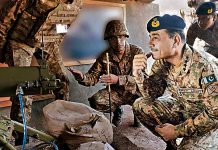Dr. Muhammad Akram Zaheer
Neorealist theory is the simplest way to understand how countries interact. It’s like the basic starting point for studying how nations relate to each other. Almost every other theory in international relations refers back to neorealism to explain their ideas. Realism, which is the oldest way of thinking about international politics, goes way back to the time of Thucydides. But when we talk about realism in this context, we mean it as a theoretical part of international relations, not a philosophy of science. It is important to distinguish between general realist thinking and neorealist theory, especially since we are focusing on this theory. Neorealism is crucial because it shapes how we build theories and explain things in international relations. These theories play a big role in guiding the actions of countries, especially the United States, in different periods like after World War II, during the Cold War and now with emerging powers like China. In the past, figures like Hans Morgenthau and Henry Kissinger shaped American foreign policy based on realist ideas. Neorealism, developed later as a critique of early realism, has also been a significant influence, especially in the U.S. Many discussions about U.S. foreign policy, like the shift from multilateralism to unilateralism in the 1990s, can be understood better by considering neorealist views. Neorealist perspectives are not just theoretical; they help us grasp the thinking behind a lot of today’s global politics.
Realist thinking focusing on “political power” and the “national interest,” was central in international relations (IR) after World War II, especially during the Cold War. However, studies on International Organizations and conflict also played a significant role in IR since the 1950s. Realism dominated IR until the late 1950s and 1960s, when there was a shift towards more fundamental research.Comparative studies, using systematic comparison to explain international relations since the 1950s, and the application of game theory to Political Sciences/IR, especially since the 1960s, aimed to find scientific explanations for international relations. In the U.S., decision-making approaches to IR became dominant, focusing on foreign policy studies in the early 1960s. Kenneth Waltz argued against theories focusing on foreign policy, claiming a lack of a genuine international political theory in the discipline. He proposed a system-level theory of IR, developing it in the 1950s and formalizing it in his 1979 book “Theory of International Politics.” Waltz believed that international conflict lie at the systemic level, not in individual or state behavior. He aimed to create a general theory that could explain recurrent patterns in international politics, particularly cycles of war and peace and the formation of balances of power among great powers.
Waltz’s quest for the right theory of international politics set the stage for the development of neorealist theory as a system theory. Neorealism, evolving into a balance of power theory, clarifies the implications of the system-level theory for real-world international politics. The Cold War’s bipolar system was the setting when the Theory of International Politics was written. Waltz thought the Cold War was surprisingly stable, even though the superpowers had tense moments. Neorealist theory focuses on how the shift from a multipolar world before 1945 to a bipolar one during the Cold War, and later to a new system after the Cold War, affects the chances of peace and stability. The theory also needs to be understood in the context of the declining power of the U.S. compared to the economic growth of Europe and Japan after the 1970s.
In this system, where power is spread out among countries, they act in a way that tries to find a balance of power. They might do this by building up their military or making alliances with other countries. This idea mostly applies to the big, powerful countries. Neorealism focuses on these powerful countries because they have the most impact on how things work internationally.Less powerful countries usually join the weaker side in conflicts, not because they want to be the strongest, but because they want to balance power. If they wanted to be the strongest, they would join the stronger side. This approach is based on the belief that in international politics, the structure of the system pushes countries to follow a practical and realistic approach.The system encourages countries to adopt a practical approach called “Realpolitik,” where the methods and reasons for foreign policy are influenced by the system’s structure. This structural influence explains why certain methods are used repeatedly despite differences in leaders and countries. The idea is that the structure of the international system guides a certain type of politics where a country’s interests are the main reason for its actions.The success of a country, defined as preserving and strengthening itself, is the ultimate test of its policies. A balance-of-power theory, which builds on system theory, predicts that countries will behave in ways that lead to balances of power. The dynamics of the system limit the freedom of individual countries, making their behavior and the outcomes more predictable.Under the structural constraints of international politics, countries tend to act in a way that aims for a balance of power. This balance is the result of countries’ actions and interactions, shaped by the constraints of the system.In essence, international politics, according to neorealism, is a continuous cycle of war and peace driven by the idea of balancing power.

















